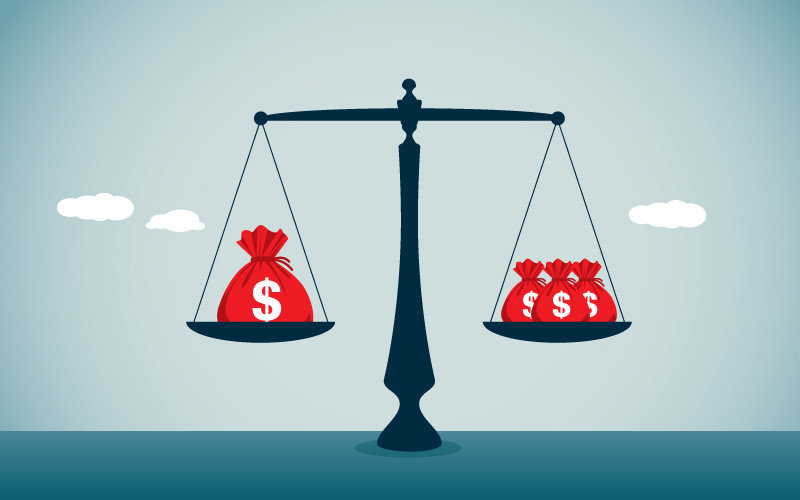
Google “wage gap” and you’ll find thousands of results, mostly focused on gender pay inequality, or the difference in earnings between men and women. Less talked about — but equally real — is pay disparity due to other factors like race, skin tone or sexuality.
What’s the main reason for wage disparity?
Shaun Pichler, chair and professor of management at Cal State Fullerton, has studied pay disparity and workplace discrimination at length. “Wage gaps are rooted in systemic cultural and institutional forces and biases,” he says. “When people are not a ‘fit’ or defy expectations, they tend to be discriminated against.
“The gender gap is larger in countries like the United States with ‘highly masculine’ cultures, where societal stereotypes say that men earn money and women do housework; it’s smaller in more gender egalitarian places like Scandinavia.”
Pichler found such misfit in research he conducted among undergraduate students and human resources professionals. Both groups were asked about hiring a fictitious job applicant as a registered nurse (stereotypically feminine job) or a sales manager (masculine job). The candidates’ resumes were identical, except for their names (male or female) and leadership role (student government president or LGBT association president).
Students made selections based on the lack of fit between the perceived gender role stereotypes and the jobs, preferring gay men and heterosexual women for nursing and heterosexual men and lesbians for sales.
“What’s interesting — if not disappointing,” says Pichler, “is results among trained professionals were the same. People make decisions without recognizing that they are doing so in a discriminatory way because culture is so deeply ingrained in our thought processes.”
Pay discrimination in exotic dancing
Siobhan Brooks, chair and associate professor of African American studies at CSUF, is an expert on cultural stereotypes, discrimination and pay disparity in a different arena than sales or nursing — exotic dancing. Her work highlights how racial stratification — inequality in social position and rewards based on race — affects wages among black and Latina dancers.
Brooks found that societal constructs of black and Latina women as hypersexual results in less access to employment at higher-end strip clubs; reduced opportunities to work prime lucrative shifts and desirable rooms within the clubs; and more frequent bargaining over fees with customers, resulting in these women receiving less pay for their work overall. Even with this population, light-skinned black and Latina women received better treatment from customers and club management than their darker-skinned counterparts, translating into making more money.
“Colorism is at play,” Brooks explains. “Club marketing often misrepresents, showing blondes or women of color who look close to white. Even when you have black women, it’s still black women that look the more European standard that’s seen as beautiful. This makes it harder for women of color, and especially darker-skinned women, to make money in these spaces.”
This type of discrimination exists across industries, Brooks adds. “Receptionist work, restaurant businesses, airline jobs — anything where you’re interfacing with people — these issues are definitely there.”
What can be done about the wage gap?
Both scholars believe legislation and its enforcement are key to battling wage discrimination. But above all, our society needs to have open, candid conversations — think #MeToo — about the cultural norms and biases underlying wage disparity.
“Wage gaps will disappear, but only after there are changes to how we as a society think about the groups that defy our expectations,” says Pichler.